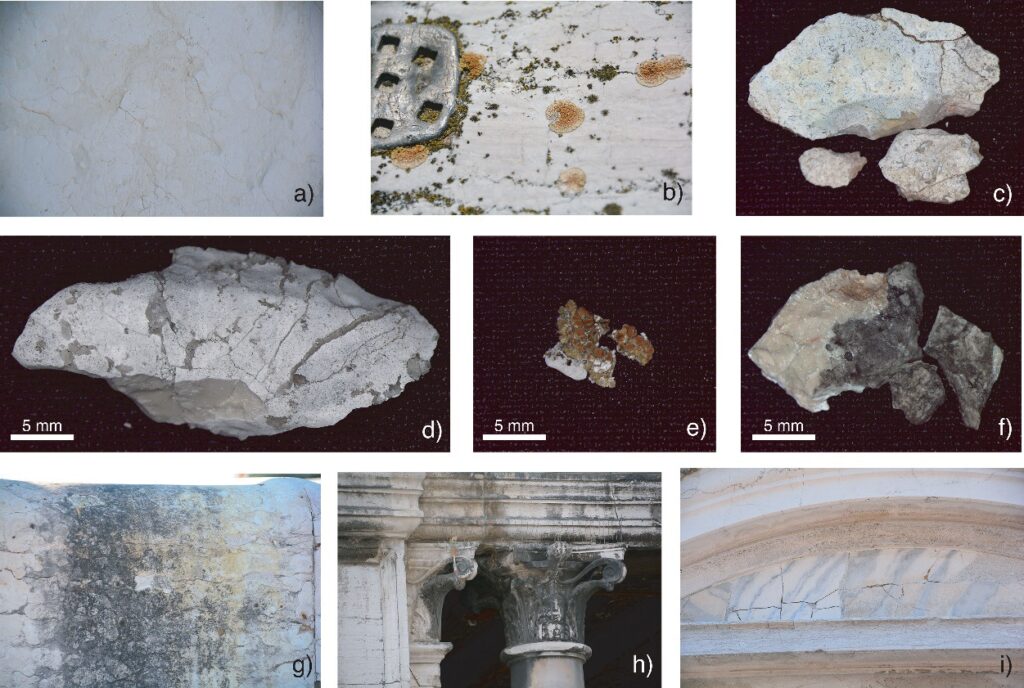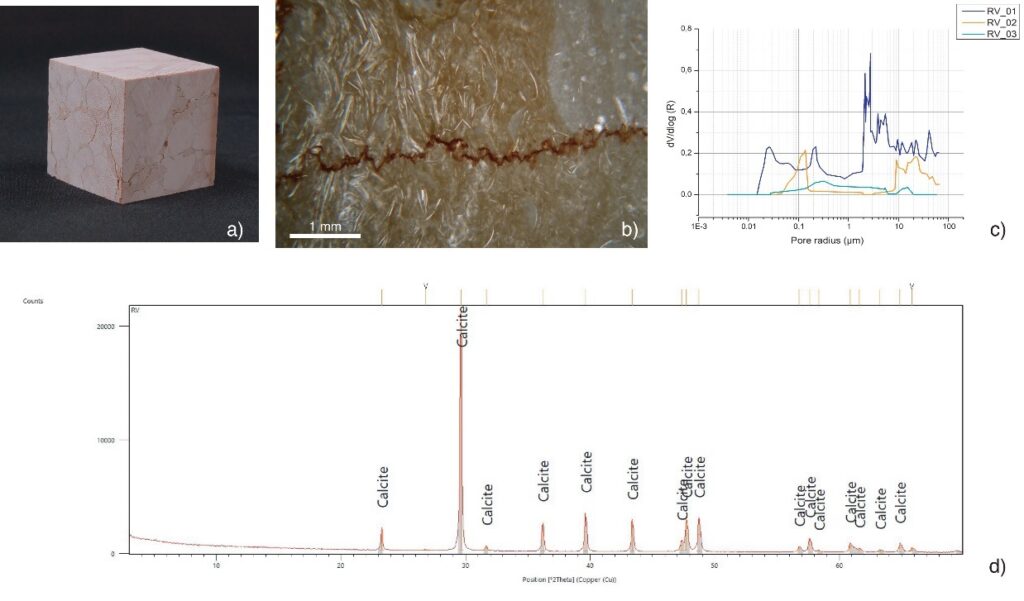
To obtain the broad spectrum approach that characterises the HYPERION project we start from
smaller details. One of them is to understand how the rock materials interact with the environment,
which is guided by the climate changes, and identify the different products resulting from this
interaction. This is the key to predict the evolution of the building material degradation.
Our aim in the HYPERION project, is to produce a detailed map of both the rock types and their
decay morphologies, used in the Tower Clock of Piazza San Marco (Venice, Italy).
The Tower Clock of Piazza San Marco is the Tier 1 building for the HYPERION Project in the
Italian pilot site, and therefore the reference for the characterisation and identification of the
lithologies employed in the Venetian historical architecture, as well as of their typical deterioration
forms and decay products.
The main rock types identified have been:
White marble (Carrara)
White marble (Proconnesian)
Red Verona (Rosso di Verona)
Istrian Stone,
Scaglia Rossa (Pietra di Prun)
Ammonitico Rosso (pink variety)
The identification of the deterioration patterns and the evaluation of their intensity were
performed following the guide of the “ICOMOS-ISCS: Illustrated glossary on stone deterioration
patterns” (2008) combined with Fitzner & Heinrichs (2001).
The most frequent deterioration patterns observed have been (Fig. 1)
black crusts (Discoloration & Deposit),
discolorations (Discoloration & Deposit),
patinas (Discoloration & Deposit),
lichen and fungi (Biological colonization),
sugaring (Material loss),
cracks (Cracks & Deformation).



